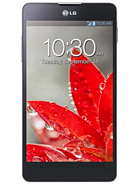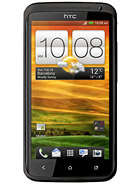Google Nexus 4 review: Royal road
Royal road
Final words
Top of the line chipset, an excellent screen and the latest Android version - does it get better than this? Well, if you are Google, it actually does. The Nexus 4 is a proper flagship smartphone, but with a mid-market price tag. It costs just €300/$300 SIM-free with 8GB of inbuilt storage and €350/$350 for the more sensible 16GB version. That's about the same as a Galaxy S II, which is 18 months old now and long past its prime.
It's not the usual way to have a smartphone deliver a loud bang for your buck. OEMs would normally go for an aging chipset, which has dropped to bargain prices, and lower screen resolution to reduce the strain on the GPU. But not Google - the search giant gave up profits, hoping that Play Store sales will make up.
Some of Google's own partners might be upset by a strategy they clearly cannot afford, but that's hardly the point here. What matters is that it's a win-win for customers and has turned the Nexus 4 into an offer that's near impossible to beat. A fast-track pass to future Android updates only comes to sweeten up an already great deal.
Of course, the Google Nexus 4 is not without its limitations either and the biggest one is probably down to the very market strategy that helped the smartphone get where it is today. We mean the internal storage of course, which at 16GB is probably enough for the majority of users, but the fact that some competitors can as much as quadruple it isn't exactly a confidence booster. Google will gladly sell you some cloud space to help you off but, as we've discussed many times, that's by far not an ideal solution.
The other weakness that the Google Nexus 4 rivals will be hoping to exploit is stock Android. While for some it's the best that Android can look, Holo is not nearly as feature-rich as Nature UX, Sense UI and Optimus UI. A custom launcher from the Play Store will go some way towards providing a solution for this problem, but it's not quite there.
You see, it's small things like smart dial and turn to mute, which we wouldn't mind having. And the list goes on with USB OTG, social network integration, Samsung's Smart Stay feature, LG's Wise Screen, etc.
There are a few other issues, as well, but we doubt any of them will be deal-breakers. The camera is sub-par and the screen has solid credentials but falls slightly short of the best in business. What's a bit surprising here is that it looks worse than the Optimus G, most probably due to poor calibration.
Here are a few smartphones that make a good alternative if any of the things above ruined the deal for you.
The kind of Android hill for much of 2012, Samsung I9300 Galaxy S III brings expandable storage, an AMOLED screen with way better contrast and a bunch of cool software tricks like Multi-View, Direct call and the above mentioned smart stay. That one also has a superior camera and better battery life than the Nexus 4 (not to mention that its battery is replaceable).
On the other hand the Galaxy S III display uses a PenTile matrix, which damages its perceived sharpness and even after undergoing several price cuts still costs about €60 more than the Nexus 4. It also uses an Exynos 4 Quad chipset, which can't really match the power of the S4 Pro inside the Google pure-bred.
Of course, you can always consider the LG Optimus G, which is, for the most part, identical to the Nexus 4. It does offer twice the storage and LG has done a better job at calibrating the display of that one resulting in more accurate colors than the Nexus 4 has.
The Optimus G is still stuck on ICS though, and is one of the most expensive smartphones of the market for now.
HTC has a couple of One X versions to put up against the Nexus 4. The original One X comes with 32GB of storage, while the recently released One X+ offers 64 gigs. Both of them have better quality screens than the Nexus 4 (though no curved glass on top), but they can't match its pricing nor its raw power.
The flaw that those alternatives share is of course the higher asking price. It's simply impossible for any smartphone in the Nexus 4's price bracket to match its offer. There's also the question of after-market support, but that can really go either way.
The power users will appreciate the raw power and vast customization potential of stock Android, looking at it as a blank canvas, ready to be painted as they see fit. Those who have a more casual attitude to their smartphones, however, might feel more comfortable with an Optimus UI-skinned ICS on the Optimus G, or Nature UX on the S III, than the stock 4.2 Jelly Bean on the Nexus. Each to their own of course, but there's no denying that Google has a real winner here. It's a shame then, that it's not as readily available as the Nexus 7 tablet.
Reader comments
- james
- 05 May 2024
- Sq6
Upgradable to Android 5.1 (Lolipop)
- Anonymous
- 21 Oct 2015
- 3%F
Press power button and volume down button in the same time
- AnonD-403739
- 07 Jun 2015
- H3M
The volume of my ringtone is diminishing down to zero sound. Can anybody advise the likely cause and cure?



